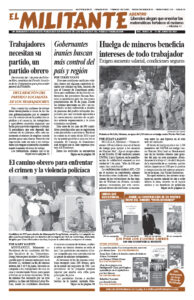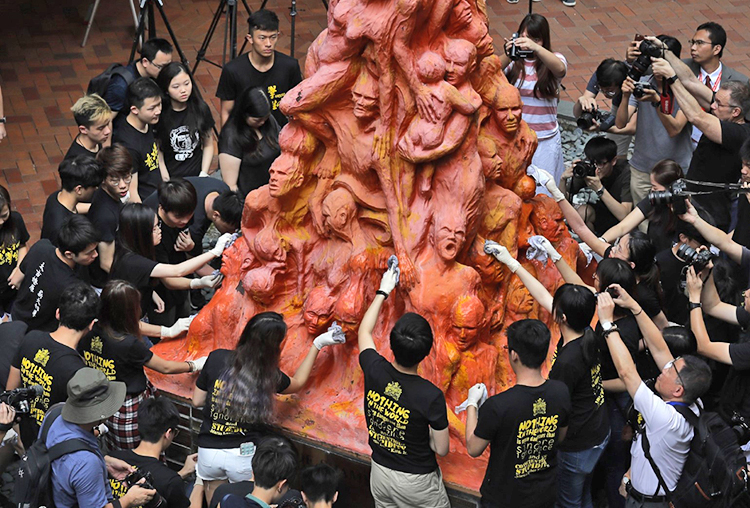Despite facing over 7,000 police, ostensibly mobilized to block “illegal assemblies,” throngs of people gathered outside barricaded Victoria Park in Hong Kong June 4. They were honoring hundreds killed 32 years ago when Beijing brutally crushed mass protests for political rights in Tiananmen Square. At the University of Hong Kong, above, students cleaned the “Pillar of Shame,” a 26-foot-high statue of mangled bodies “to remember the bloody lesson” about that 1989 attack. Forbidden elsewhere in China, the annual Hong Kong vigil is now a symbol of opposition to Beijing’s tightening assault on political space.
Hundreds went into the streets holding cellphones or other lights, while others “stayed at home, holding candles in memorial of the massacre,” Daniel Chan told the Militant from Hong Kong. The mass deployment of cops caused such widespread traffic jams that “many people say [the police] made sure nobody would forget it was June 4.”
Memorial Masses were held to mark the anniversary at a number of Catholic churches, Chan said. “A few days ago, some people put up banners outside” the churches, denouncing the commemorations as “evil heresy.”
Alarmed by huge anti-government demonstrations in 2019, the Chinese rulers pushed Hong Kong authorities to use pandemic restrictions and new national security legislation to clamp down harder on political space by arresting and imprisoning hundreds of protesters. They fear the example the protests set for millions of workers and farmers in the rest of China.


